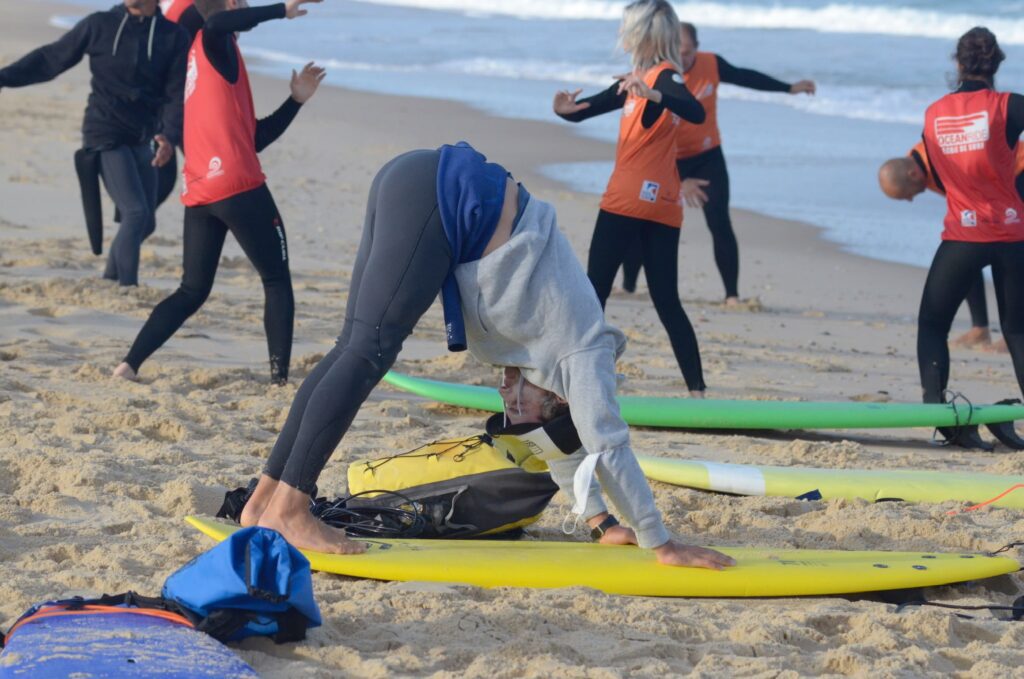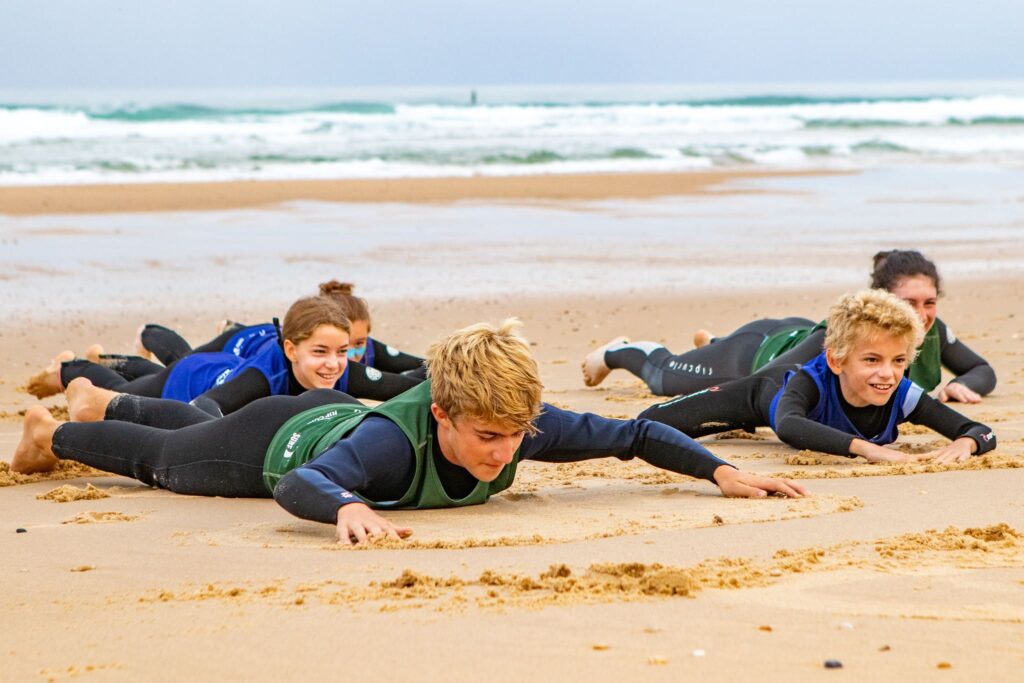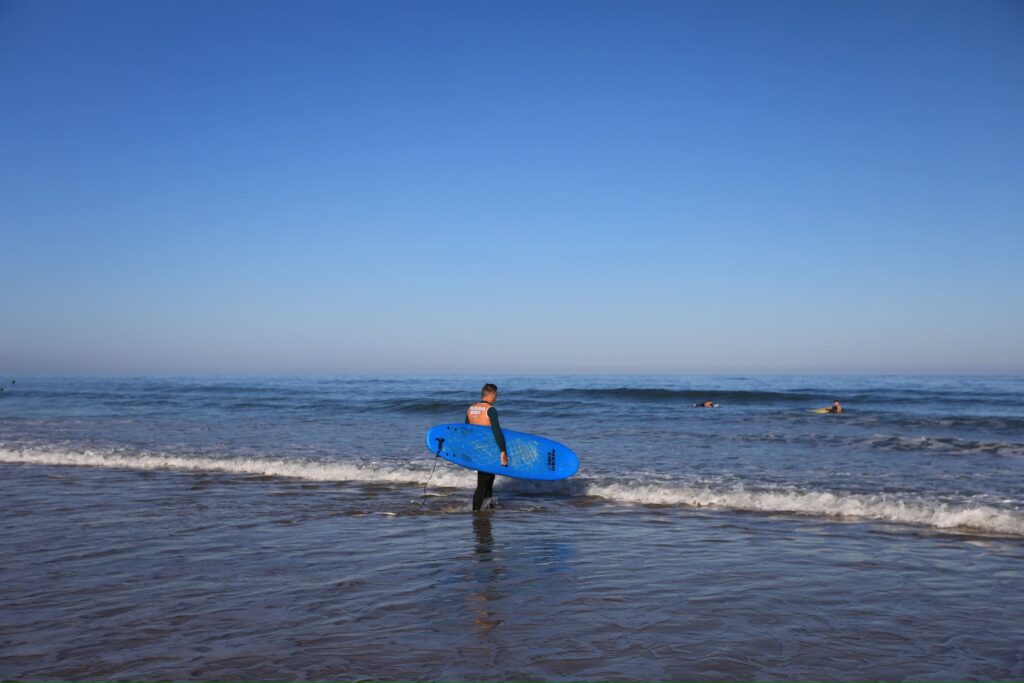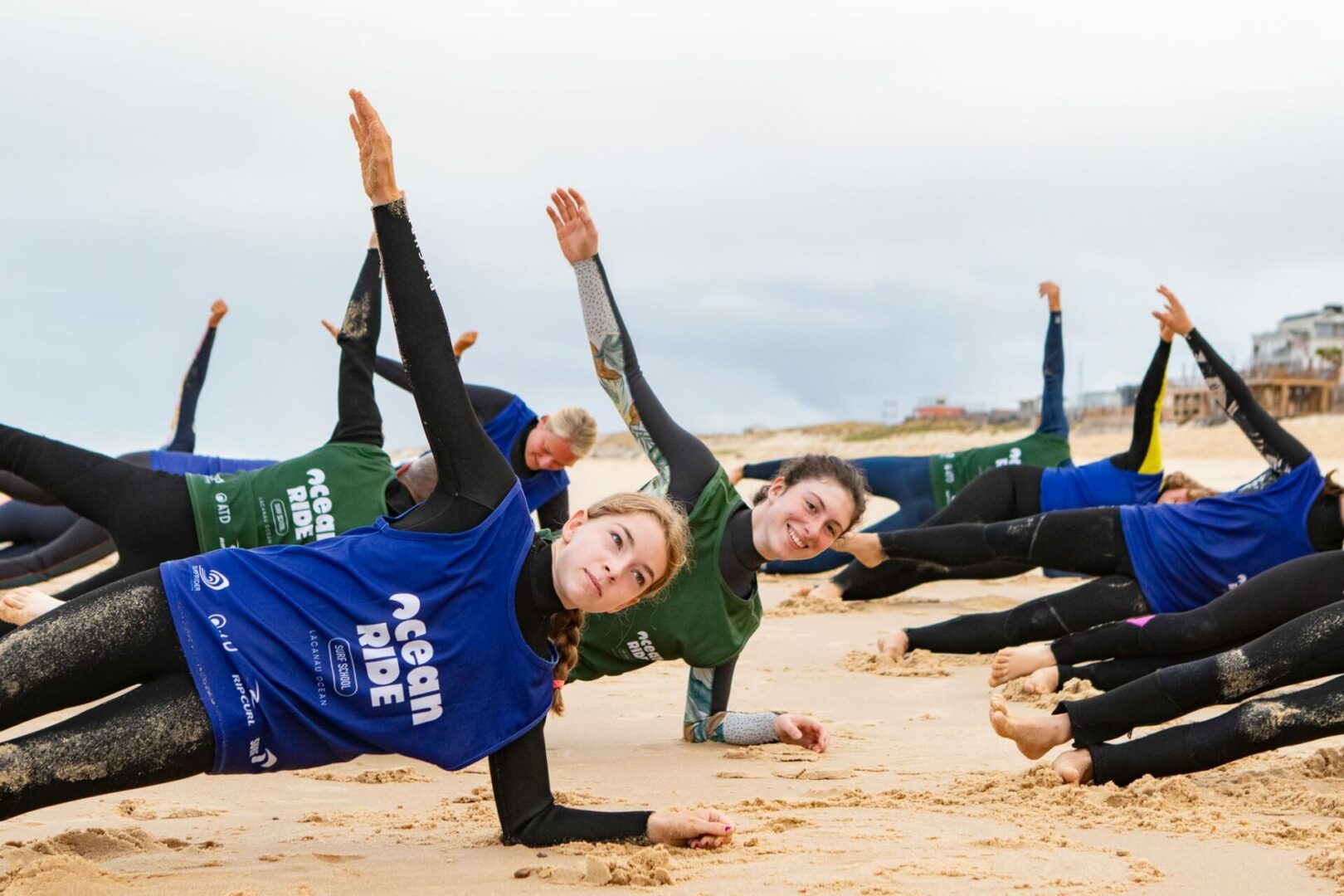Winter often sounds like a break for surfers. The thermometer drops, the swell plays yo-yo, wetsuits get thicker. Enough to slow your momentum—yet the cold season can become a real training ground to progress in other ways. Here’s how to stay in shape out of the water so you come back to surf in Lacanau in spring stronger and calmer. No need to overdo it—just be consistent.
Why is winter a pivotal season for surfers?
When the beaches empty and the water dips below 13 °C, you feel like stashing your board. But winter isn’t a cut-off; it’s a prep phase. The ideal time to maintain your fitness, prevent injuries, and work on skills often overlooked in peak season. Staying active in winter keeps your endurance, power, and flexibility, while feeding your motivation and mindset—two levers that make or break your surfing.
Winter surfing is also a mindset
Facing the cold, sticking to a routine, seeking improvement in the “invisible” effort—this all forges character. Why get up when the wind bites and you could stay under the duvet? Because consistency leaves a lasting mark. This is where the difference is made between simply “getting through the season” and genuinely progressing. You learn to put your heart into the work, to accept winter’s tempo: you adapt, adjust, and hold your course.
Winter becomes a chance to work on yourself, without the pressure to “perform perfectly right now.” You allow imperfect sessions, average days, sluggish mornings. Little by little, the bird builds its nest: ten minutes of mobility, a short run, three clean sets, and your mindset lifts.
Sometimes you just have to accept that it’s less “fun” now to restart stronger later. You move forward in small, quiet steps, jot down two sensations, breathe a bit better, hold a plank one minute longer. Tomorrow might be the same—or a little better. What’s certain is that spring always rewards those who did the work.
Build an off-season training routine
Your winter plan should match your goals: simple, varied, regular, and motivating. The key is combining strength work, mobility, cardio, and balance. You’ll amplify surfing’s benefits when you get back in.
1) Targeted strength training
Surfing relies heavily on the upper body for paddling, the core for bracing, and the legs for takeoff and maneuvers. Practically speaking, alternate push-ups, pull-ups, and dips for power. Add squats, lunges, and a few box jumps for pop and stability. Finish with static and dynamic core work (planks and variations) to lock in the midline. Two to four sessions per week, 30–45 minutes, three to four clean sets. We’re not reinventing the wheel—we’re maintaining it.
2) Mobility and flexibility
Mobility is the key to a fluid stroke and a back that says thank you. Add a “surf-focused” yoga session (or 20 minutes of active mobility), target shoulders, hips, and ankles, and treat yourself to deeper stretching in the evening. Five minutes a day is already enough to make a difference.

3) Cardio and endurance
Paddling is endurance with bursts. Maintain your aerobic base with swimming, MTB, running, or the rowing machine. Alternate steady cardio for 30–40 minutes with HIIT-style intervals for 10–20 minutes to mimic efforts between sets. Effective—without taking all day.
4) Balance and pressure/weight feel
Balance is the foundation. It’s your ability to sense where your feet, knees, and hips are without looking—body awareness (proprioception). In surfing, that lets you correct a wobble in a split second, place your front foot right at takeoff, and stay steady when the board vibrates. You progress faster…and fall less.
No equipment needed. Go barefoot, stand on one leg for 30–45 seconds, then switch. To dial it up: slowly turn your head, close your eyes briefly, or stand on a soft surface like a folded towel or cushion. If you have a balance board, a BOSU half-ball, or a slackline, use them—but they’re not essential. What matters are crisp foot pressure and calm breathing.
Adopt a lifestyle that supports progress

Progress in winter isn’t only about training. Your lifestyle drives recovery, motivation, and overall form. Often, that’s where the real difference is made.
Nutrition suited to the season
When it’s cold, your body spends a bit more to stay warm. Aim for simple, comforting, regular meals. Colorful, unfussy plates: half seasonal vegetables, a good quarter protein (eggs, fish, chicken, tofu, lentils), and the rest complex carbs (whole-grain bread or pasta, basmati rice, sweet potato). This trio balances energy, recovery, and satiety.
For “good fats,” think omega-3s twice a week (mackerel, sardines, trout) and a small handful of nuts daily (walnuts, almonds, hazelnuts). For recovery, keep protein intake steady through the day: Greek yogurt after training, a bowl of lentils at dinner, a bit of fresh cheese on whole-grain bread. And don’t forget vitamins/minerals from market produce: carrots, leeks, cabbages, citrus…
Hydration in winter is mostly warm: herbal teas, warm water, light tea. Cold dulls thirst, not needs; sip regularly without waiting to feel thirsty. After a session, a big mug of warm water (or light broth) within an hour helps top up; if you’ve sweated a lot indoors (erg, HIIT), add a pinch of salt or a little honey/lemon.
Sleep and recovery
Sleep enough for muscle regeneration. Mix in active rest days with walking, gentle stretching, and breathing. Two short sessions of nasal breathing (5 minutes) help calm the nervous system. Consider doing heart-coherence breathing daily.
Mindset and motivation
Set realistic, progressive—but above all concrete—goals. A process goal (doing) before an outcome goal (performing). It’s the best anti-procrastination insurance: you know exactly what to do today.
Visualize the spring return as a positive milestone. Keep a short training log: “Session / feeling (1–10) / sleep & mood.” Note what helped (time, place, music) and what got in the way (fatigue, weather). On Sunday, read it back: what worked? What do you keep? Put a mark on the calendar for every “active” day and avoid “breaking the chain.”
Then reduce friction. Prep your gear the night before, block a fixed slot, choose a Plan B if the weather turns: “If it rains, then 20 min mobility + 10 min balance at home.” And if you hit a wall? The five-minute rule: start anyway—those five minutes usually get you rolling.
Complementary winter activities for surfers

Varying keeps you out of a rut and on deck. Surfskate maintains glide feel and footwork technique; climbing sharpens core and precision (perfect for rainy days); SUP works whenever conditions allow; on the winter sports side, snowboard, ski, or splitboard build terrain reading and commitment. Each sport brings its own edge.
Winter: a time to analyze and learn
This is the ideal period to train your “surf brain.” Analyze videos (break them down, zoom in on foot pressure), flip through books on wave mechanics, follow an online course (weather, oceanography, tactics). You’ll paddle out with a plan and better decisions.
Winter surfing isn’t limited to icy waves. It’s a foundational period of reassessment and invisible—but essential—progress. With an active, structured, motivating approach, you’ll return to the line-up in spring with more power and confidence. And more stoke. At Ocean Ride, even though we close in winter, we see surfing as a year-round lifestyle to maintain. Take care of your body, your mind, and your passion. Spring comes quickly. Shall we get started? Book your next surf lessons now.
FAQ: Everything You Need to Know About Winter Surfing
Yes—if you’re properly equipped (5/4 mm wetsuit, gloves, booties, hood) and you respect safety rules. Winter often delivers excellent swells.
A mix of strength + cardio + yoga/mobility + balance maintains surf readiness. Add one or two surfskate sessions to automate your footwork. That way, the comeback is smooth.
Clear goals, a training buddy (or a club), variety, and keeping fun in sight. Consistency matters far more than intensity.
Push-ups, squats, and planks for the basics; swimming, running, or the rowing machine for engine; shoulder/hip mobility for a smoother takeoff.

